What Is a Hydroponic System?
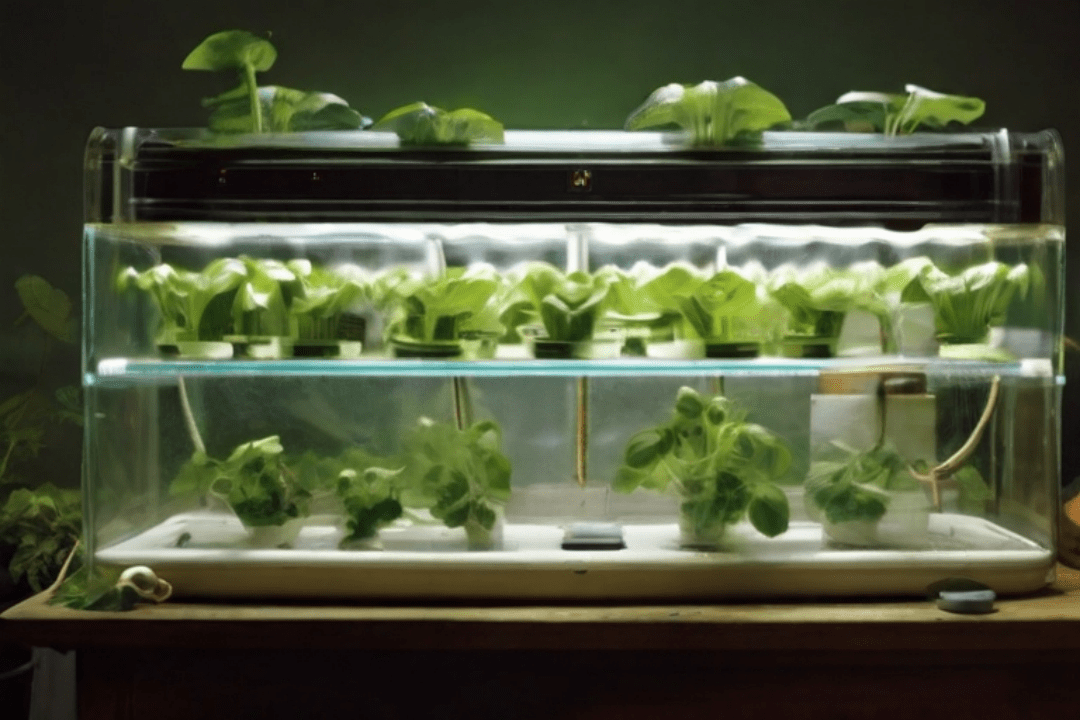 Illustration of a hydroponic setup generated with Leonardo.AI's artificial intelligence
Illustration of a hydroponic setup generated with Leonardo.AI's artificial intelligence
As modern agriculture continues to evolve rapidly, today's growers face numerous challenges: conserving resources such as water and land, increasing efficiency and productivity, and keeping up with technological advancements. That's why more and more farmers, greenhouse operators, and even regular households are turning to an optimal method: hydroponics.
In an increasingly urbanized world, questions arise about how to ensure a supply of fresh produce. How can we get the necessary vitamins and minerals if we live in big cities like Sofia, Varna, or Burgas? In this post, we'll examine how hydroponic systems can help address these issues.
Table of Contents
- What Is a Hydroponic System?
- Types of Hydroponic Systems
- Drip Irrigation System
- Aeroponics
- Automated Hydroponic System
- Wick Hydroponic System
- Deep Water Culture (DWC)
- Nutrient Film Technique (NFT)
- Flood and Drain System
- References
What Is a Hydroponic System?
A hydroponic system—sometimes also called a drip irrigation system or simply “hydroponics”—is an innovative method of growing plants without soil. Instead, plants are placed in a medium rich in nutrients, which can be either water-based or a solid substrate like mineral wool.
In these setups, nutrient delivery happens through a specially formulated solution containing macronutrients (like potassium, calcium, and magnesium) and micronutrients (such as zinc, zinc, and manganese). Various types of hydroponic systems exist, each suitable for different environments. That’s why you might see them on commercial farms, greenhouses, someone’s backyard—or even inside a home.
It’s worth noting that hydroponics have become increasingly popular among younger entrepreneurs looking to start their own ventures. In the first season of the UEVA Startup Initiative, for example, BUL-AI mentored a team presenting a plan for the country’s first “smart greenhouse”, designed with a multi-tier hydroponic system that incorporates an AIGarden platform. This team, called GreenFlow, won first place in that inaugural competition.
If we look back at the history, hydroponics predates aquaponics. According to research by Vilma Petkova and Kristiana Krasteva, as early as the period between 1699 and 1779, scientists like John Woodward and Joseph Priestley conducted experiments on plant physiology. Their discoveries about oxygen transport, nutrient uptake, and photosynthesis outside of the soil laid the groundwork for hydroponics. By 1860, Julius Sachs and Wilhelm Knop had developed the foundation for the first water-soluble nutrient supplement.
Types of Hydroponic Systems
A small-scale hydroponic system can produce enough food for an entire family. In contrast, a large industrial setup—often in a greenhouse—can produce enough fruits and vegetables for many households. Naturally, production capacity depends on your hydroponic installation's specific type, size, and height.
Researchers have identified several major hydroponic methods: drip irrigation systems, aeroponics, automated hydroponic systems, wick systems, deep water culture, flood and drain, and the nutrient film technique. Let’s explore each one, examine their advantages, and see why so many regard hydroponics as the future of agriculture.
Drip Irrigation System
A drip irrigation-based hydroponic system operates with a few main components: a container or tank holding either mineral wool or water, an air pump, an air stone, a reservoir, and a nutrient pump. This is one of the simplest versions of hydroponics , making it a popular choice. You can build a small model at home, though professional help may be necessary for larger, industrial-scale systems.
Drip irrigation hydroponics can be broken down into two subtypes:
Recirculating (Renewable) Drip Systems
Recirculating (Renewable) Drip Systems: In recirculating drip systems, any nutrient solution not absorbed by the plant roots flows back into the reservoir for reuse. This design appeals to households and businesses aiming to reduce their ecological footprint and conserve resources.
However, the pH level may fluctuate because the solution is constantly circulating. That means you’ll need to replace the water regularly and closely monitor pH. Software solutions like AIGarden can help with this, letting you track pH levels in real time.
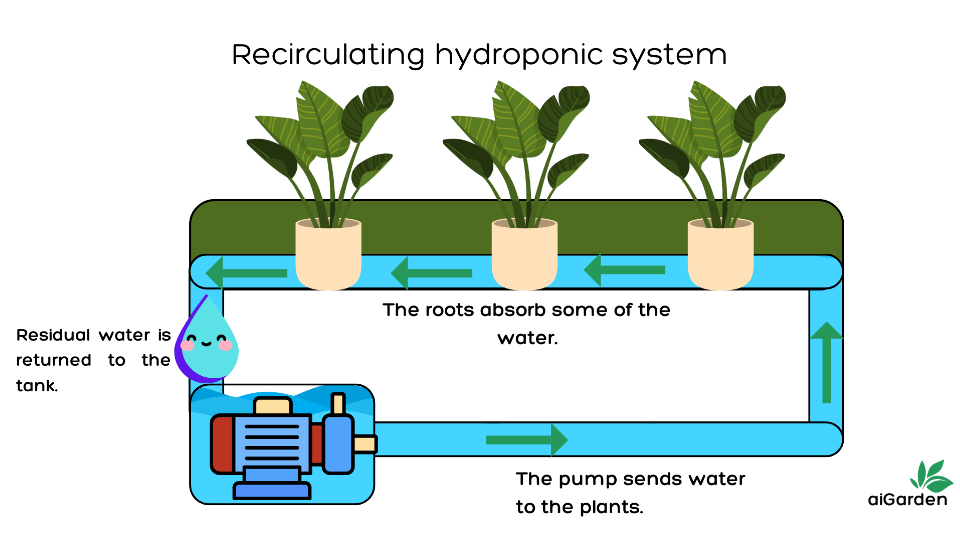
Non-Recirculating (Non-Renewable) Drip Systems
Unlike their recirculating counterparts, non-renewable drip systems discard excess nutrient solution rather than recycling it back into the reservoir. As a result, they’re less environmentally friendly and generally considered less efficient.
Still, this approach has fans among large industrial producers. Discarding the used solution lowers the need to maintain the reservoir. Unfortunately, that’s about the only advantage non-recirculating drip systems offer.
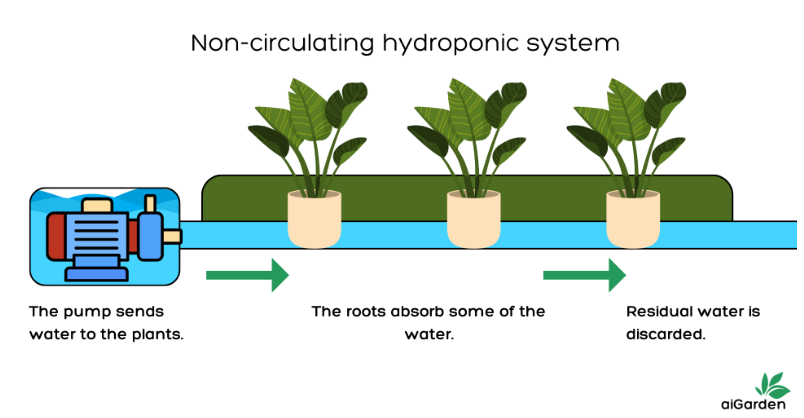
Aeroponics
Until a few years ago, aeroponics—where plant roots hang in the air and receive nutrients through a fine mist—was considered the most cutting-edge hydroponic technology. Nowadays, advances in agriculture have led to even more sophisticated methods. Nonetheless, aeroponics remains a top choice for home gardeners and commercial growers.
This system suspends plant roots in mid-air and sprays them with a nutrient solution at regular intervals, often via nozzles that produce either a mist or a spray. The plants get plenty of oxygen, and the water is used efficiently. On the downside, this setup can be quite costly, making it less practical for most households.
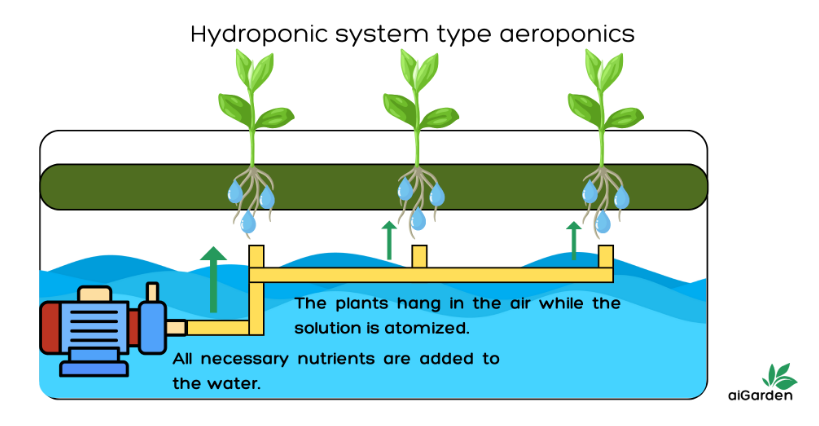
Automated Hydroponic System
Automated hydroponic systems come equipped with specialized software that allows you to control every factor needed for healthy plant growth. An example is AI L-Hydroponics (opens in a new window), which integrates the AIGarden platform into a custom-built hydroponic system.
With such a system, you can manage temperature, humidity, airflow, and carbon dioxide levels in the environment where your hydroponic system is located. You can also track nutrient levels in the water, monitor the water’s pH, and oversee every growth stage your plants go through.
The main advantage of automated setups is that they offer constant oversight and prove cost-effective in the long run. If you’re not a fan of technology, you might be put off by the learning curve, but AIGarden includes a straightforward guide that simplifies the process.
Wick Hydroponic System
Wick systems use a specialized cotton or nylon wick to transport the nutrient solution to the plant roots. They’re easy to assemble at home but aren’t ideal for large-scale operations. One reason is that they can’t efficiently support bigger plants or deliver nutrients as effectively as more advanced systems. Additionally, wick systems are entirely passive, with no need for pumps or moving parts.
To make this work, part of the wick is usually placed at the bottom of the nutrient reservoir while the rest runs into another container holding the roots. The nutrient solution travels along the wick, moistening the surrounding medium as needed.
Deep Water Culture (DWC)
In a deep water culture setup—sometimes called water culture—plants are grown directly in oxygen-rich, nutrient-laden water without needing a solid substrate like mineral wool. The heart of this system is a well-oxygenated solution containing both water and the nutrients your plants need.
Three main components make up a deep water culture system:
- Oxygen — Provided by an air pump or air stone to ensure roots can breathe.
- Water — The reservoir holds a significant volume of water, which helps stabilize nutrient levels. Less monitoring is required compared to smaller systems.
- Nutrients — Mixed into the water so that roots receive a constant supply.
It’s called “deep water” culture because:
- The reservoir is often large enough to hold a substantial volume of water, aiding stability and reducing the need for constant checks.
- Unlike systems where roots are periodically dipped into water, most of the root mass in DWC is submerged 24/7.
- DWC is known for low maintenance requirements and faster plant growth. However, the downside is that maintaining consistent pH and nutrient concentration can be tricky.
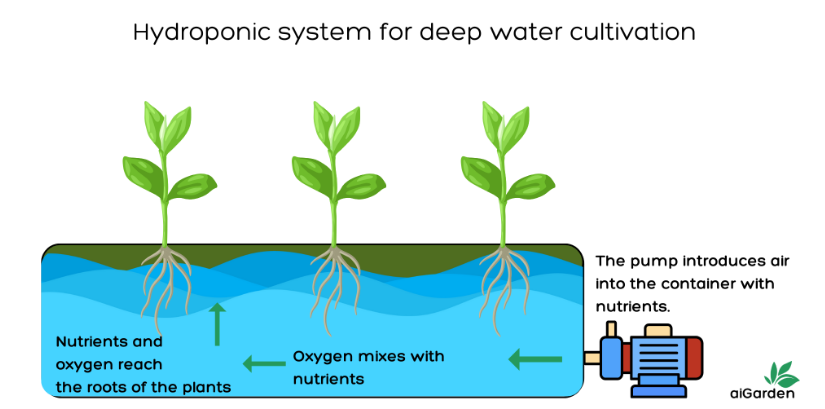
Nutrient Film Technique (NFT)
In NFT systems , the nutrient solution is pumped from the reservoir and flows through slanted channels where the plant roots are housed. Thanks to the slight angle, the water eventually drains away, and you can choose to reuse it (recirculating) or discard it (non-recirculating). NFT typically works best for smaller plants rather than large, heavy-producing ones.
This system is quite popular with small- and medium-scale growers who want to produce commercially. Because it doesn’t require a separate growing medium, plants are usually placed in net cups or supportive structures that hold them in place while roots dangle in the nutrient flow.
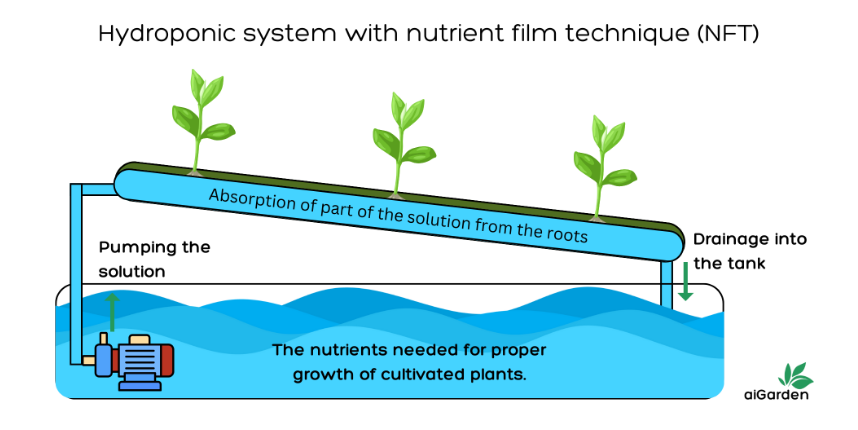
Flood and Drain System
Also known as a non-recirculating system, flood and drain hydroponics use specialized pumps—often called “Flood & Drain” pumps—to fill the growing tray with the nutrient solution. The water drains out, dropping just below the top layer of the growing medium.
This setup opens the grow space, and plants aren’t confined to net pots with predetermined spacing. Flood and drain work well for crops with higher water demands, but it requires careful monitoring since a power outage or pump failure could jeopardize the entire crop.
If you want a high-quality hydroponic system, contact us through our main page.
References
- Wikipedia, "Hydroponics";
- Hydroponics, "Various Hydroponics Systems"
- Trees.com, "Hydroponic Systems – Different Types and How They Work"
- Vilma Petkova, Kristiana Krasteva, "Comparative Analysis of Aquaponic and Hydroponic Systems" (PDF from external link), New Bulgarian University, Department of Natural Sciences
- Trees.com, "Hydroponic Drip System Explained";
- AIGarden.bg, "AI Greenhouse System";
- Unacademy, "Wick System";
- Kevin Espiritu, "Deep Water Culture"




